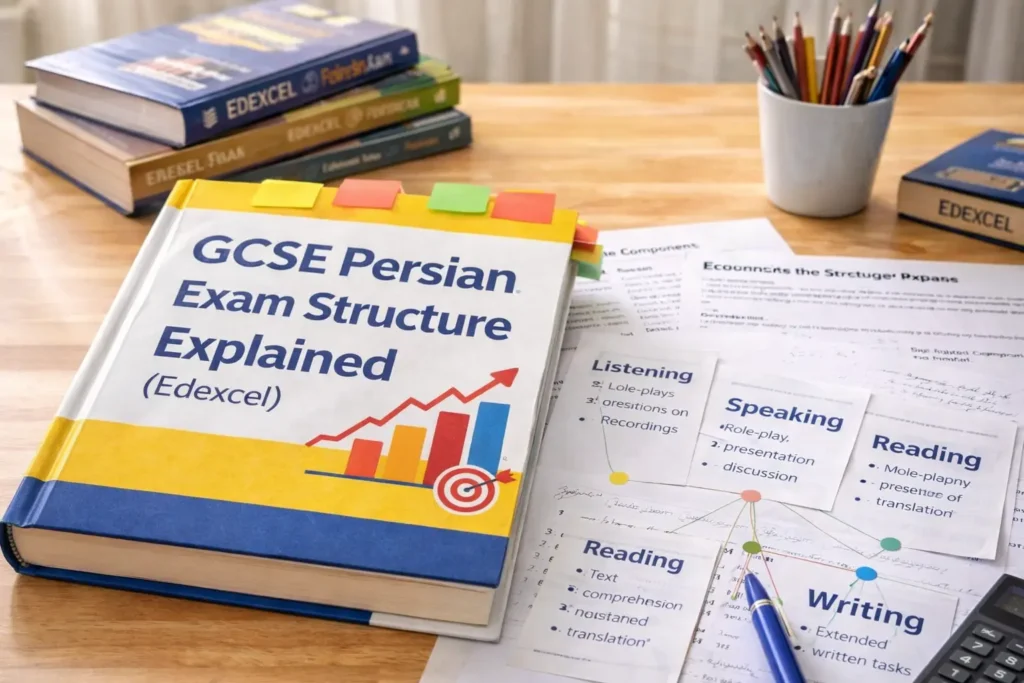Learning a new language can be an enriching experience, opening doors to new cultures, literature, and communication. If you’ve ever been interested in the Persian language, enrolling in Farsi language classes can be your first step towards fluency. This guide will help you understand what to expect from a Farsi course and the benefits of learning Persian Farsi, and it will provide answers to common questions about the language learning process.
Why Learn Persian Farsi?
The Persian language, commonly known as Farsi, is the key to accessing a rich cultural heritage that spans thousands of years. From classical poetry to modern literature, learning Farsi allows you to appreciate the works of renowned Persian poets like Hafez, Rumi, and Ferdowsi in their original language. The cultural significance of Persian Farsi is profound, encompassing a wide array of art, music, and historical texts that offer a deep understanding of the region’s history and ethos.
Practical Benefits
Knowing Farsi can provide cultural insights as well as practical benefits. It is the official language of Iran and is also spoken in Afghanistan and Tajikistan. This can be particularly advantageous for business, travel, and diplomatic purposes.
Moreover, understanding Farsi can enhance your career prospects in fields such as international relations, global business, and Middle Eastern studies. For travelers, being able to communicate in Farsi can make navigating through Persian-speaking regions more enjoyable and insightful.
What to Expect from Farsi Language Classes
A well-structured Farsi language course is designed to cater to beginners with no prior knowledge of the language. The course typically starts with the basics, such as the Farsi alphabet, pronunciation, and simple vocabulary. Gradually, it progresses to more complex aspects, including grammar, sentence structure, and conversation skills.
The course is designed to be incremental, building on each lesson to reinforce learning and retention. Whether learning to read and write Persian Farsi or focusing on conversational skills, the course structure will support your learning journey effectively.
Reading and Writing
One of the primary goals of any Farsi language class is to help students read and write in Persian Farsi. This involves familiarizing students with the unique Persian script written from right to left. Students learn to recognize and write Farsi characters through consistent practice and guided instruction, eventually forming words and sentences. Reading comprehension exercises and writing assignments are integral to the curriculum, ensuring students develop strong literacy skills in Farsi.
Listening and Speaking
Listening and speaking skills are equally important. A comprehensive Farsi course emphasizes the development of conversational abilities, allowing students to engage in everyday dialogues. Listening exercises, pronunciation drills, and interactive speaking activities are integral parts of the curriculum. These activities build confidence and fluency in speaking Farsi, enabling students to communicate effectively in various situations.
Choosing the Right Farsi Language Course
When selecting a Farsi language course, choosing an accredited program ensures high-quality instruction is crucial. Accredited courses are often recognized for their rigorous academic standards. Qualified instructors with expertise in the Persian language teach them. Accreditation also assures that the curriculum meets established educational standards and that students will receive a well-rounded education.
Flexible Learning Options
Look for courses that offer flexible learning options, including online classes, evening sessions, or weekend workshops. This flexibility can especially benefit working professionals or students with busy schedules. Online classes, in particular, offer the convenience of learning from anywhere, making it easier to fit language studies into your daily routine.
Course Duration and Intensity
Consider the duration and intensity of the course. Intensive programs may offer faster progress but require a significant time commitment. Conversely, part-time courses spread over a longer period may be more manageable for those balancing other responsibilities. It is important to choose a course structure that aligns with your learning goals and availability.
How to Enhance Your Learning Experience
Consistent practice is key to mastering any new language. Dedicate time each day to reviewing lessons, completing assignments, and practicing speaking with native speakers or fellow learners. Setting specific goals for your practice sessions can help you maintain motivation and track your progress over time.
Use Language Learning Apps
Supplement your classes with language learning apps designed specifically for Farsi. These apps often provide interactive exercises, vocabulary-building tools, and opportunities for real-time conversations. They can be a valuable resource for reinforcing what you learn in class and providing additional practice opportunities.
Engage with Persian Media
Immerse yourself in Persian culture by engaging with Persian media, such as movies, music, and news. This will improve your listening skills and give you a deeper understanding of contemporary Persian society. Watching Persian films or listening to Persian music can make learning more enjoyable and relatable.
Join Language Exchange Groups
Participating in language exchange groups can provide additional practice and cultural exchange opportunities. Engaging with native speakers and other learners can enhance your conversational skills and provide a supportive community for your language learning journey.
Common Challenges and Solutions
Learning the Script
One of the initial challenges in learning Farsi is mastering the Persian script. Unlike the Latin alphabet, the Persian script has its own unique characters and is written from right to left. Regular practice and using writing aids such as tracing sheets can help overcome this challenge. Breaking down the learning process into manageable steps and focusing on a few characters at a time can also make it less overwhelming.
Pronunciation
Another common challenge is pronunciation. Farsi has several sounds that do not exist in English, which can be difficult for beginners. Listening to native speakers and mimicking their pronunciation can be very helpful. Utilizing pronunciation guides and practicing with language learning apps that provide audio examples can also improve your pronunciation skills.
Vocabulary Building
Building a strong vocabulary is essential for language proficiency. Flashcards, language apps, and regular reading can enhance vocabulary retention. It’s also beneficial to use new words in sentences and conversations to reinforce learning and ensure that you can use them correctly in context.
FAQs
Is Farsi an easy language to learn?
Farsi is considered relatively easy for English speakers to learn, especially compared to other Middle Eastern languages like Arabic. The grammar is straightforward, and there are no gender distinctions in nouns. However, the unique script and pronunciation can present challenges that require dedicated practice to master.
How long does it take to learn Farsi?
The time required to learn Farsi depends on various factors, including your prior language learning experience, the amount of time you dedicate to studying, and the intensity of the course. Generally, it takes several months to a few years to achieve proficiency. Consistent practice and immersion in the language can significantly speed up the learning process.
What is the fastest way to learn Farsi?
The fastest way to learn Farsi is through an intensive language course combined with daily practice and immersion. Engaging with native speakers and using language learning resources can accelerate your progress. Intensive study programs that include speaking, listening, reading, and writing exercises can help you achieve fluency more quickly.
Can you learn Farsi on your own?
While self-study is possible, structured classes can provide a more efficient and comprehensive learning experience. Instructors can offer personalized feedback, correct mistakes, and guide you through challenging aspects of the language. Additionally, structured courses provide a systematic approach to learning, which can be beneficial for building a strong foundation in the language.
Is Farsi or Turkish harder?
Both Farsi and Turkish have their unique challenges. Farsi grammar is simpler, but the script can be difficult for beginners. Turkish has a more complex grammar system but uses the Latin alphabet, which might be easier for some learners. Ultimately, the difficulty of learning either language depends on your language background and learning preferences.
Is Farsi harder than Arabic?
Farsi is generally considered easier than Arabic for English speakers. Arabic has a more complex grammar system and a wider variety of dialects. Farsi, on the other hand, has a more straightforward grammar and fewer dialectical differences. Additionally, the Persian script, while unique, is often easier to learn than the Arabic script for many learners.
Conclusion
Learning Persian Farsi can be rewarding, providing access to a rich cultural heritage and practical communication skills. Whether you enroll in an intensive program or take a more gradual approach, the key to success lies in consistent practice and engagement with the language. Start your journey today with Danaa School‘s Farsi learning courses and immerse yourself in the fascinating world of Persian language and culture.







